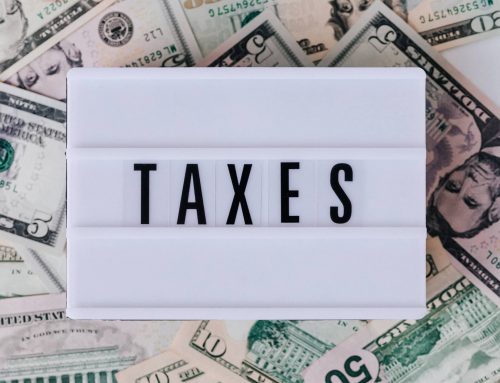Manage it right- Income tax slabs for 2021-22
Paying taxes can be a tedious process as it requires one to be well-versed with the rules and norms. In India, the income tax is based on a slab system on which the taxpayers have to pay tax. The slab system means that the tax rates are given to each person based on their income.
The Union Budget for 2020 brought with it a change in the tax calculation for individuals. For FY 2020-21, taxpayers could choose between two income tax regimes – the existing/old tax regime and the newt ax regime. If one continues with the old tax regime, they could continue to avail existing deductions such as section 80C, section 80D etc. of the Income-tax Act, 1961 and tax exemptions like house rent allowance, LTC cash, vouchers etc could be availed. The new, concessional tax regime offers lower tax rates compared to the old tax regime, but by opting for the new regime, the taxpayer will have to forgo most tax deductions and exemptions that are available under the old regime.
Income Tax slab for individuals below 60 years:
| 1ST OPTION | 2ND OPTION | |||
| Old Income Tax slab | New Income Tax slab | |||
| Upto Rs 2,50,000 | NIL | Upto Rs 2,50,000 | NIL | |
| Rs 2,50,001 – Rs 5,00,000 | 5% | |||
| Rs 2,50,001 – Rs 5,00,000 | 5% | Rs 5,00,001 – Rs 7,50,000 | 10% | |
| Rs 7,50,001 – Rs 10,00,000 | 15% | |||
| Rs 5,00,001 – Rs 10,00,000 | 20% | Rs 10,00,001 – Rs 12,50,000 | 20% | |
| Above Rs 10,00,000 | 30% | Rs 12,50,001 – Rs 15,00,000 | 25% | |
| Above Rs 15,00,000 | 30% | |||
Income Tax Slab for individuals between 60 years and 80years:
| 1ST OPTION | 2ND OPTION | |||
| Old Income Tax slab | New Income Tax slab | |||
| Upto Rs 3,00,000 | NIL | Upto Rs 2,50,000 | NIL | |
| Rs 2,50,001 – Rs 5,00,000 | 5% | |||
| Rs 3,00,001 – Rs 5,00,000 | 5% | Rs 5,00,001 – Rs 7,50,000 | 10% | |
| Rs 7,50,001 – Rs 10,00,000 | 15% | |||
| Rs 5,00,001 – Rs 10,00,000 | 20% | Rs 10,00,001 – Rs 12,50,000 | 20% | |
| Above Rs 10,00,000 | 30% | Rs 12,50,001 – Rs 15,00,000 | 25% | |
| Above Rs 15,00,000 | 30% | |||
Income Tax Slab for individuals above 80years:
| 1ST OPTION | 2ND OPTION | |||
| Old Income Tax slab | New Income Tax slab | |||
| Upto Rs 5,00,000 | NIL | Upto Rs 2,50,000 | NIL | |
| Rs 2,50,001 – Rs 5,00,000 | 5% | |||
| Rs 5,00,001 – Rs 10,,00,000 | 20% | Rs 5,00,001 – Rs 7,50,000 | 10% | |
| Rs 7,50,001 – Rs 10,00,000 | 15% | |||
| Above Rs 10,00,000 | 30% | Rs 10,00,001 – Rs 12,50,000 | 20% | |
| Rs 12,50,001 – Rs 15,00,000 | 25% | |||
| Above Rs 15,00,000 | 30% | |||
Health & Educational cess @4% shall also be paid on the amount of income tax.
For taxpayers who decide to follow the new income tax regime, know that you will no longer benefit from the various deductions and exemptions offered under different sections of the Income Tax Act.
The following investments qualify for tax deductions
- Under section 80C (Up to Rs 1, 50,000): Investment in EPF, PPF, ELSS, Insurance, etc
- Under section 80D (Up to Rs 100,000): An individual can claim a deduction up to Rs 25,000 for health insurance of self, spouse, and dependent children. An additional deduction for the insurance of parents is available to the extent of Rs 25,000 if they are less than 60 years of age, or Rs 50,000 if your parents are aged above 60. If both the taxpayer and the parent whom the medical covers have been taken for are aged more than 60 years, the maximum deduction that can be availed under this section is to the extent of Rs 1,00,000.
- Under section 80CCD (1b) (Up to Rs 50,000): Contribution to National Pension Scheme (NPS) is eligible for deduction. (Even contribution to Atal Pension Yojana is eligible for deduction.)
- The old tax system looks even more lucrative if one avails deductions on interest paid on housingloan. Under section 24, up to Rs 2,00,000/- paid as interest on home loan is eligible for tax deduction.
- Under section 80EEA additional deduction of Rs 1,50,000/- isallowed on home loan sanctioned between 1st April, 2019 to 31st March, 2022. This is applicable only for 1st time home buyers. However, the stamp value of the property should not exceed Rs 45 lakhs. The property area should not exceed 60 sq meters in metropolitan cities and 90 sq meters in other cities.
Individuals need to assess their tax implications under both the regimes to identify the best option, in accordance with their financial goals.




